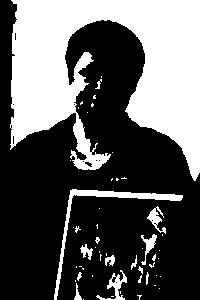 English professor Ann Kibbie teaches a number of literature and film theory classes on subjects from Milton to Jane Austen. Her research focuses on representations of money and capital in early modern literature, the 18th-century novel, Samuel Richardson, sentimentalism, the 18th- and 19th-century gothic, law and literature, and literature and the history of medicine.
English professor Ann Kibbie teaches a number of literature and film theory classes on subjects from Milton to Jane Austen. Her research focuses on representations of money and capital in early modern literature, the 18th-century novel, Samuel Richardson, sentimentalism, the 18th- and 19th-century gothic, law and literature, and literature and the history of medicine.
How did you find your path toward becoming a professor?
I took some time off after college — I had no idea what I wanted to do. I worked as a nanny, as a waitress and as a secretary — not all at the same time! Each one of those jobs taught me a lot, and they gave me time to think about what mattered to me. I realized that I wanted to spend the rest of my life thinking about books.
We hear that your “Film Noir” class had unusual origins; can you describe how it came about?
In one of my first years at Bowdoin, a very bright student who was interested in film asked me if I would be willing to do an independent study with him. I had never taught film, but it was a subject I had always been interested in so I gave him a choice of genres to explore: either the Western, or film noir. He chose film noir, and that independent study became the basis for the course I now teach as a first-year seminar. That student was Bart, of Bart and Greg’s DVD Explosion. We still talk about films, and he helps me keep up with all of the noirs that are being re-released on DVD. The most exciting recent release: Max Ophuls’s Caught, a thinly disguised portrait of Howard Hughes.
Can you tell us a bit about your “Imagining London” class, and your experience applying technology to the humanities?
This course focused on 18th-century literature in which London itself becomes a central topic or theme. We started with James Boswell’s London Journal, a real account of a young man’s sojourn in the city. Students used a variety of digital tools to map some of the places he mentions (coffeehouses, theaters, parks and gardens, etc.), to get a sense of what Boswell’s London was like. Then, later, they developed their conceptual frameworks for mapping a very different view of London: one based on the adventures of a fictional character, Daniel Defoe’s Moll Flanders. These mapping projects were fascinating in what they allowed us to do (to visualize the 18th-century city in a new way), and also in how they exposed some of the questions that maps themselves cannot answer about how we engage with, and experience, a given place. The literary critic Franco Moretti asks this about literary maps: “What do they do that cannot be done with words, that is . . . do maps add anything to our knowledge of literature?” These are the questions that I will continue to use this course to explore, and I’m grateful to the students who were willing to be the first group to tackle this with me.
Can you tell us a bit about your current research?
I’ve recently finished a manuscript on blood transfusion in the 19th century, both in medical practice and as a literary device in satirical, sentimental and gothic fiction. This grew out of my interest in Bram Stoker’s Dracula, which contains four scenes of medical transfusion. I wondered whether medical practitioners actually performed such operations in the 19th century. In looking for the answer to that question, I found myself immersed in reading primary sources such as 19th-century medical case histories, lectures delivered at medical schools and news reports on inquests. I also found a number of short stories and novels, beyond Dracula, that depict transfusion in fascinating ways — showing how a real-life medical practice filters into the popular imagination.
Can you tell us something about yourself that the Bowdoin community may not know?
I can sing along (off key) to every song Frank Sinatra recorded.
